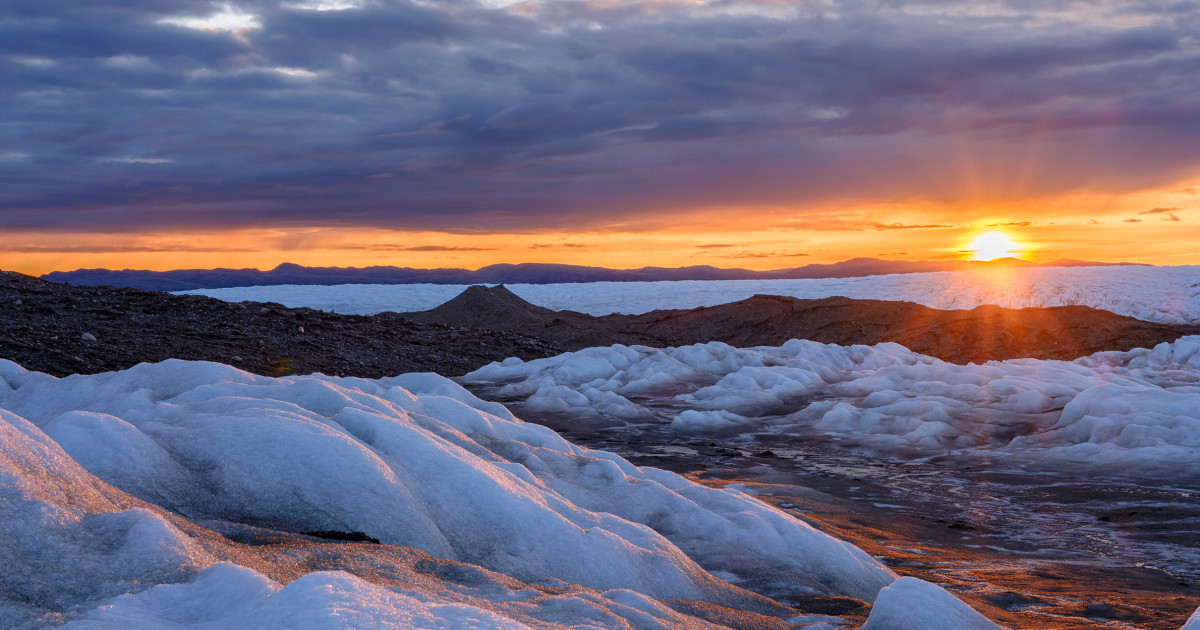Icon: enlarge
Ice remnants on the Arctic Ocean off Greenland (archive image)
Photo: Science Photo Library / Science Photo Library / imago images
For more than 40 years, researchers have been using satellites to observe the extent of the ice in the Arctic.
The area of the ice is traditionally smallest at the end of summer.
This year, the extent of the ice is now at the second lowest value since measurements began.
According to current satellite images, at the end of the second week of September the clods only covered an area of 3.8 million square kilometers.
The value was only lower at the end of summer 2012. At that time, according to the University of Bremen, only 3.27 million square kilometers were left.
This means that 2020 and 2012 are the only years in which the ice cover was less than 4 million square kilometers.
The Arctic has been warming about twice as fast as all other regions of the world for around three decades.
This changes the region's ecosystems massively and creates problems for polar bears and seals, for example.
Over the years, however, there are always individual reasons for the extent of the ice loss.
Several factors played a role this year: On the one hand, according to the Alfred Wegener Institute (AWI) in Bremerhaven, predominantly thin sea ice was formed in the Russian marginal seas in the past winter.
This then melted quickly in spring.
Heat put the ice up from above and below
On the other hand, it was particularly hot in many places in the Arctic this year.
Heat waves hit the ice both from above and below and made it disappear over a large area.
"This heat first melted the thin sea ice in the Laptev Sea, then it accelerated the retreat of the ice in the East Siberian Sea, so that the Russian Arctic already had around one million square kilometers less sea ice in June of this year than in the previous seven years," said AWI Sea ice physicist Christian Haas.
In July, a heat cell migrated to the central Arctic.
There she let the air temperatures rise by up to six degrees Celsius above the long-term mean for the years 1981 to 2010.
The high temperatures also played a crucial role in the spread of forest fires on the Arctic mainland, especially in Siberia.
A severe storm in the Canadian Arctic also contributed to the disappearance of the sea ice.
This had spread the sea ice floating in the ocean over a large area.
Many of the clods then melted within a short time.
The ice has a light surface, which means that a large part of the sunlight is reflected.
If, however, the water surface is exposed, for example due to a storm, it is much darker.
Instead of being thrown back, a good part of the incoming energy is stored - and contributes to the melting of further clods.
This creates a kind of vicious circle.
The sea surface temperature in the Russian marginal seas as well as in the Barents Sea and the Chukchi Sea was up to 4.5 degrees above the long-term mean, according to the AWI.
The crew of the research icebreaker "Polarstern" also noticed the thin ice.
At the very end of the one-year “Mosaic” drift expedition, the ship had made a detour to the North Pole - through extremely thin ice, the journey was much faster than expected.
You can see "wide areas of open water almost to the pole, surrounded by ice, which was completely perforated by massive melting," says expedition leader Markus Rex.
"The ice in the Arctic is disappearing at a dramatic rate."
The "Polarstern" is now on her way home again.
Huge ice break in Greenland
Since the floes of the Arctic ice float on the water, they do not contribute to the global rise in sea levels.
It is different when, for example, more ice enters the sea from the glaciers on the Canadian islands, but especially on Greenland.
Most recently, a 113 square kilometer piece of ice broke off at the Nioghalvfjerdsfjorden glacier in Greenland.
Researchers assume that the Arctic has now entered a new climate regime.
A team led by Laura Landum from the National Center for Atmospheric Research in Boulder (US state Colorado) had recently reported on this in the journal "Nature Climate Change".
That means: Regardless of the annual variability, the Arctic has meanwhile warmed up so much that the temperatures were outside the limits of previous years.
"It is a time of such rapid change that observations of past weather patterns no longer show what to expect in the next year. The Arctic is already in a completely different climate than it was a few decades ago," says researcher Landum.
Even in an unusually cold winter, there will not be as much ice as there was in the middle of the 20th century.
Icon: The mirror
chs








